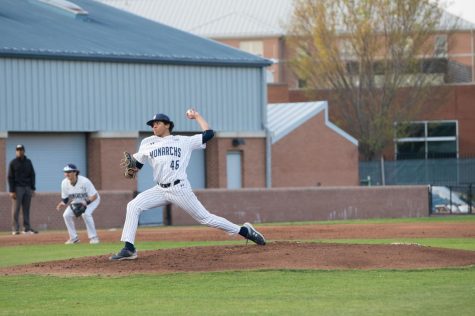The University of Utah held its fifth annual Giving Day from March 28 to March 29. The celebration lasted a little over 30 hours — or 1850 minutes exactly — and has so far raised $1.2 million thanks to over 4,800 donors.
“It’s 1850 minutes, based on the U’s founding year,” said Kelsey Rodgers, associate director of annual giving. “Basically all of our departments in the University of Utah and University of Utah Health come together to fundraise for really important causes and projects on campus.”
Rodgers added that Giving Day is an important time for the U because private philanthropy is “so huge to the success of the university.”
This year, there were about 120 different fundraising projects that wouldn’t have been possible without the Giving Day donors, Rodgers said.
“We do our best to create really exciting experiences, really impactful experiences for our students and part of being able to grow those, expand those and make them even more meaningful does require funding,” she said.
These projects were split into five categories: arts & culture, campus & community resources, equity, diversity & inclusion, scholarships and U alumni.
Rodgers said that this organizational structure gives donors a unique opportunity to explore different projects in areas they care about.
One of the U’s biggest goals for Giving Day this year was to get students more involved, and they did this in a variety of ways, including tabling around campus and taking over the University of Utah Instagram account. There was also an opportunity for students and donors to get a personalized link and become a “champion” for a specific cause.
The giving team can see how many people use that link to donate, and at the end of the festivities, two “truest champions” will be crowned, who “made a huge impact on Giving Day through their efforts of being a champion,” Rogers said.
The centerpiece of student involvement, however, was the two-day-long philanthropy fair.
“It’s an opportunity for us to help students learn the importance of philanthropy,” Rodgers said. She added that while they often talk about the importance of giving back to donors and alumni, “we’re working really hard to kind of teach that to students here on campus as well.”
The first day of the fair was in the Library Plaza, and representatives from across campus came to teach students about philanthropy in their respective areas. Students could also enter a drawing if they visited at least six tables and asked the designated “philanthropy question.” Over 700 students attended.
“I don’t have a final number yet, but I know that we ran out of items at 700, so probably more than that,” Rodgers said.
Day two of the fair was held in the Union building and was service project-focused, rather than money-focused.
“We obviously know that fundraising dollars are important, but we also want to teach students about the importance of giving back time and talent and all those types of things,” Rodgers said. “Students are doing service projects, participating in those and giving back to the campus and community that way.”
Gracie Sorensen, a third-year information systems major and member of the Student Alumni Board, was tabling on the second day of the fair to “show that it’s a student-led day for students to give back to the school that’s given them a lot.”
She added that she decided to participate in the philanthropy fair because it’s important to “cultivate a culture of giving” as a student.
“For me personally, I wouldn’t be able to have the experience I’ve had without other people making philanthropic donations,” Sorensen said.
This is why she aims to create a “cycle of giving back,” that will continue even after she is no longer a student.
Though Rodgers didn’t have any specific dollar or donor goal, she felt like the fifth annual Giving Day was a success simply due to all the different areas of campus it reached.
“We’ve significantly grown the number of areas that we’re representing and also we’re getting a lot more interest from students in terms of learning what philanthropy is about,” she said.
Rodgers added that students being involved in Giving Day is really important so they can “understand that they have so many supporters behind them in terms of friends and family, previous alums, all these people who they may have never met.”



 Fort Collins Music eXperiment – It may sound like a weird science-themed CSU Lab band formed in a broom-closet, but in actuality it is Fort Collins’ own renowned music festival hosted each April in Downtown Fort Collins! Affectionately known as FoCoMX, the festival is making a triumphant return to the heart of our town’s music and culture scene after a two-year hiatus. Audiences are already showing their love in anticipation of Northern Colorado’s most sorely missed musical pageant. FoCoMX was born as an effort from the Fort Collins Musicians Association to increase the visibility and value of musicians whose talent and creativity make our local scene magical.
Fort Collins Music eXperiment – It may sound like a weird science-themed CSU Lab band formed in a broom-closet, but in actuality it is Fort Collins’ own renowned music festival hosted each April in Downtown Fort Collins! Affectionately known as FoCoMX, the festival is making a triumphant return to the heart of our town’s music and culture scene after a two-year hiatus. Audiences are already showing their love in anticipation of Northern Colorado’s most sorely missed musical pageant. FoCoMX was born as an effort from the Fort Collins Musicians Association to increase the visibility and value of musicians whose talent and creativity make our local scene magical. No matter your musical tastes there’s definitely something for everyone. From bluegrass to metal, hip hop to punk, acoustic or synthesized, fans can hear original songs and tributes, experience the tame and the brazen, in both indoor and outdoor settings. Colorado artists will showcase nearly all genres during two days of musical performances. And if you want to get involved in the music scene consider being a volunteer and get a free festival wristband and commemorative t-shirt for your time. Audiences are encouraged to come see their favorite local acts, while also discovering new artists from more than three hundred Colorado artists across thirty stages. You might catch the next break-out broom-closet band in an intimate bar before they’re selling out stadiums – it wouldn’t be the first time – *clears throat* Nathaniel Rateliff!
No matter your musical tastes there’s definitely something for everyone. From bluegrass to metal, hip hop to punk, acoustic or synthesized, fans can hear original songs and tributes, experience the tame and the brazen, in both indoor and outdoor settings. Colorado artists will showcase nearly all genres during two days of musical performances. And if you want to get involved in the music scene consider being a volunteer and get a free festival wristband and commemorative t-shirt for your time. Audiences are encouraged to come see their favorite local acts, while also discovering new artists from more than three hundred Colorado artists across thirty stages. You might catch the next break-out broom-closet band in an intimate bar before they’re selling out stadiums – it wouldn’t be the first time – *clears throat* Nathaniel Rateliff!



